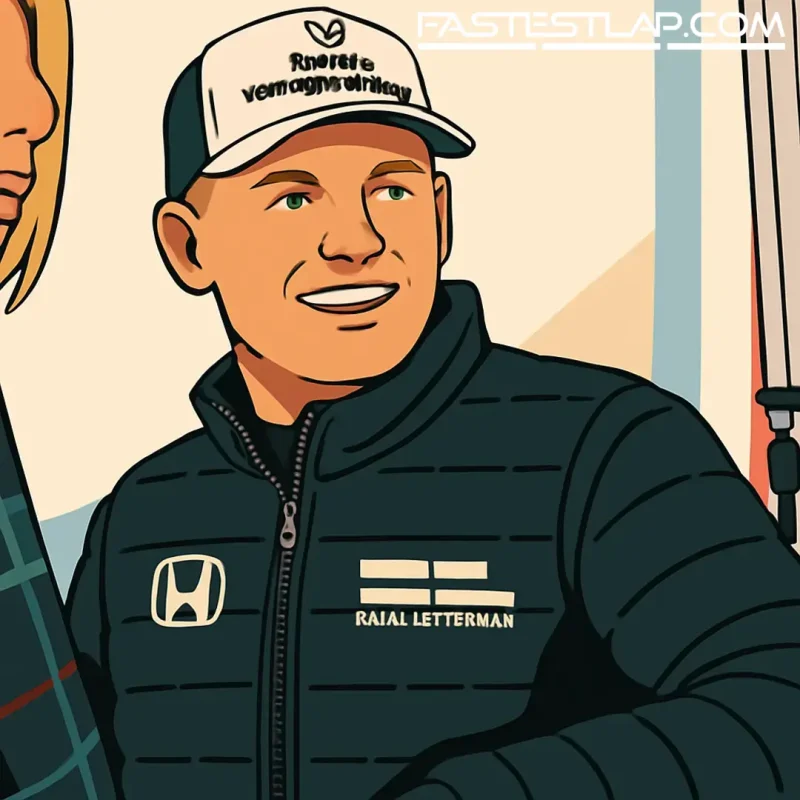Mick Schumacher dips a toe into IndyCar with RLL: “So far, so good” at IMS
Mick Schumacher has finally scratched the itch. Two years after his last Formula 1 start and with a full-time return still not on the table, the 25-year-old took his first laps in an IndyCar on the Indianapolis Motor Speedway road course, sampling Rahal Letterman Lanigan Racing’s Honda as part of post-season running.
“So far, so good,” he said with a grin during a midday pause. The message was simple: this wasn’t about dabbling; it was about seeing whether North America’s bruising, beautifully chaotic single-seater series could become home.
“IndyCar comes the closest to what I can still race,” Schumacher told IndyCar.com. “I can’t go back to Formula 2 because I won a championship. IndyCar might be a good option. Obviously, my target the past couple of years has been to go back to Formula 1, but that option hasn’t quite opened up this year or the years previous to that. So at some point I want to race again in single-seaters, and therefore this option is a good one.”
Schumacher arrived in town on Friday, embedded with the RLL crew over the weekend, and rolled out on Monday on the 14-turn, 2.439-mile IMS layout — a venue that knows his surname well. Michael Schumacher made the place a personal playground during the early 2000s, collecting five wins and four poles at the United States Grand Prix back when F1 used a different iteration of this same infield course. You didn’t need to squint to spot the nostalgia.
This wasn’t a private day out. Schumacher ran among familiar faces and experienced hands: ex-F1 driver Alexander Rossi and IndyCar race winner Christian Rasmussen shared the track, while a cluster of Indy NXT talents also got mileage. For Mick, it was about the feel — heavy brakes, no power steering, fat Firestones, and the busy, feedback-rich baseline that defines modern IndyCar.
Ovals? Not yet. Like most European converts, Schumacher isn’t rushing there first. But he didn’t dismiss it, either. “For sure, I’m interested to try it and see what it’s all about,” he said, adding that if a deal happens he’d rather go all-in than cherry-pick. “It’s a great championship, 17 races. I’m still young, so I do want to race as much as I can, and I think the people here really live motorsports. I also like the mentality of the driver being the main part of the team and driving the team forward.”
The decision for 2026 isn’t made. “It’s a decision that lies with both sides,” he noted. Translation: RLL (or any suitor) must be convinced and Schumacher has to be sure this is the path. “We all have a couple of days and weeks to think about it and see what opportunities there are for the future. But so far, so good.”
There’s context, of course. Schumacher raced for Haas in Formula 1 in 2021–22, banking a best result of sixth at the 2022 Austrian Grand Prix. The partnership ended that winter. Since then, he’s kept one hand on the F1 world as a reserve with Mercedes and McLaren, and the other on endurance racing via Alpine’s FIA World Endurance Championship program. Yet the tug back to single-seaters is obvious. “I want to enjoy racing, and to do that I want to find where I feel most at home,” he said. “I’m not saying Europe or WEC or any of those other championships aren’t that, but I feel maybe racing single-seaters is what I always wanted to do.”
Not everyone in the family is sold. Ralf Schumacher, never shy with a straight line, expressed reservations on Sky Deutschland about a switch stateside: “I don’t really understand that, because I believe he’s in great hands where he is now and can have a great future. It’s not so easy for people from IndyCar to make the transition to Formula 1. And if you go over there, it’s a bit like Japan – the standard is still high, so it won’t be that easy to succeed in America. And that’s why it’s an additional pressure that perhaps you don’t need to put yourself under.” He even said he’d advise his son David against it, calling it “too dangerous.”
Mick’s view is gentler, more pragmatic. He’s not posturing for F1 leverage. This was an honest look at the next chapter. IndyCar’s sales pitch — parity, elbows-out racing, and a culture where the driver’s feel can move a program forward — clearly resonates with him. If the fit’s right, there’s a decent chance this wasn’t a one-off.
The name on the timing screens turned heads in Indianapolis. Whether it turns into a contract is the next question. For now, Mick Schumacher got what he came for: clarity from the seat, not the simulator. That’s a good start.




